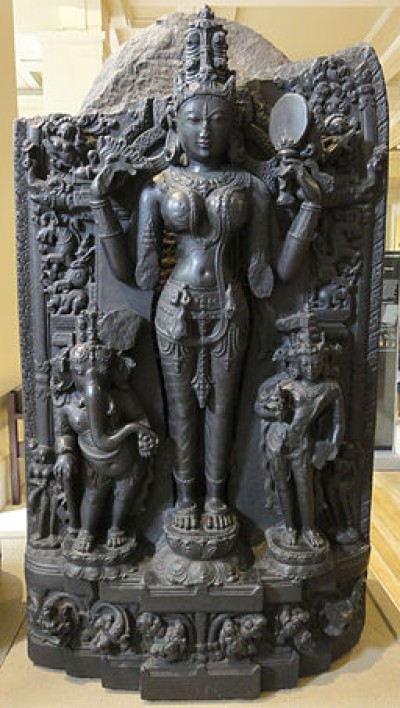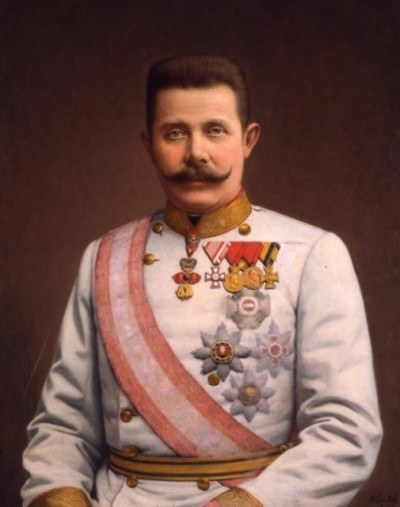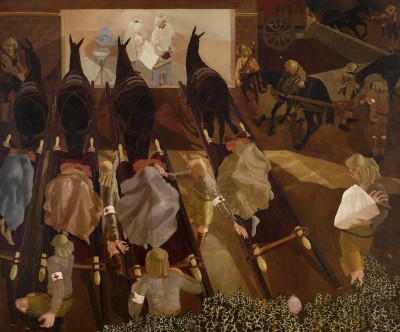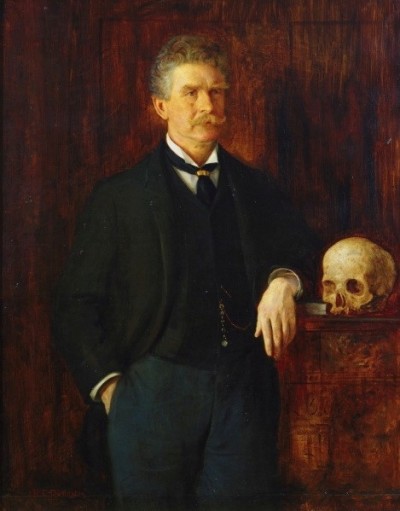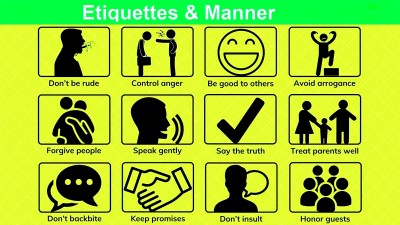Course description
The Pala Empire of Bengal
 The Pala Empire is often referred to as the Golden Age of India because of its support for literature, philosophy, innovative architecture, painting, and science. During the rule of the Pala emperors, an early version of Bangla was first used in writing and close relations developed with the Abbasid rulers of the Middle East, who borrowed Indian expertise in mathematics.
The Pala Empire is often referred to as the Golden Age of India because of its support for literature, philosophy, innovative architecture, painting, and science. During the rule of the Pala emperors, an early version of Bangla was first used in writing and close relations developed with the Abbasid rulers of the Middle East, who borrowed Indian expertise in mathematics.
But that is not to say that some of the kings of the Pala dynasty were not also great military leaders. They had a huge army of war elephants, for instance, and came to rule over most of modern Pakistan, northern India, Nepal and (what is now) Bangladesh in the ninth century.
 What they could not conquer, they often annexed, through carefully selected marriages and diplomacy. They were Buddhists and exported their religion to Tibet and, so, even after the decline of that religion in India, their influence still lives on further east. They also had strong economic ties with other kingdoms as far away as China and contemporary Syria and Iraq.
What they could not conquer, they often annexed, through carefully selected marriages and diplomacy. They were Buddhists and exported their religion to Tibet and, so, even after the decline of that religion in India, their influence still lives on further east. They also had strong economic ties with other kingdoms as far away as China and contemporary Syria and Iraq.
However, the Pala domination of huge areas of land was not based on direct rule, except at its centre, but the obedience of kings and states which accepted Pala supremacy. This made the Empire vulnerable to attack and rebellion either from rival empires or from leaders within their own lands. Eventually, after nearly five hundred years, the Pala Empire collapsed in the twelfth century. Yet, even during the Palas’ greatest days, there was a constant shifting of their borders, as their lands were attacked and their armies sometimes defeated.
If we compare the Palas with the Mauryans, we notice immediately that there is no outstanding heroic figure, like Chandragupta Mauryaor Ashoka Maurya, who towers above all others of their dynasty. Of course, there were better and worse leaders, but no shining examples of exemplary leadership. In this lecture, therefore, we will focus less on individual personalities and more on the legacy of the dynasty as a whole.
 So, where did the Palas come from and what factors allowed them to build a vast empire from nothing within just a few decades of the start of the reign of the first king, Gopala, in 750?
So, where did the Palas come from and what factors allowed them to build a vast empire from nothing within just a few decades of the start of the reign of the first king, Gopala, in 750?
Well, towards the close of Gupta rule around 500 to 550, there were several very weak kings who were powerless to stop their regional governors from fighting between themselves or even breaking away from the Empire and becoming independent rulers. Since the death of the Gupta Emperor Skandagupta in 467, there had never been another feared leader and the Empire gradually shrank until it was engulfed in civil wars. Then, Shashanka, a chieftain from the region, emerged – but we cannot be sure where from – and seized power.
 Shashanka is a hero of Bengali history because, during his reign, he put an end to in-fighting, established Bengal as a geographical and political entity, laid the foundations of the Bengali language, and extended his lands into Orissa and Bihar. The empire he established was called Gaur and it is interesting that many other people in the subcontinent call Bengalis Gauriya even today and the early Bangla tongue was referred to as Gauriya Bhasha in Shashanka’s time. However, this symbolic figure – the first lord to rule all of Bengal – died in 625 and, almost immediately, his lands fell into chaos and anarchy. And so it continued for the next 125 years, with prince battling prince, assassinations, murder and invasion. Writers at that time referred to government as ‘fish justice’, where big fish eat the little ones.
Shashanka is a hero of Bengali history because, during his reign, he put an end to in-fighting, established Bengal as a geographical and political entity, laid the foundations of the Bengali language, and extended his lands into Orissa and Bihar. The empire he established was called Gaur and it is interesting that many other people in the subcontinent call Bengalis Gauriya even today and the early Bangla tongue was referred to as Gauriya Bhasha in Shashanka’s time. However, this symbolic figure – the first lord to rule all of Bengal – died in 625 and, almost immediately, his lands fell into chaos and anarchy. And so it continued for the next 125 years, with prince battling prince, assassinations, murder and invasion. Writers at that time referred to government as ‘fish justice’, where big fish eat the little ones.
 And, then, in 750 or thereabouts, along came Gopala. His surname, Pala, meaning ‘Protector’ in Sanskrit, was later used by all the monarchs of the dynasty. His kingdom covered Bengal and Bihar in north-east India. A written account from that time suggests Gopala was elected by the people – although this almost certainly means chieftains – but Gopala had a very different account himself. He said that there were several kings elected before him but they were all eaten by Naga, the widow of a former king. Gopala was ready and waiting for her though and killed her, so allowing him to rule his new kingdom for many years. You can decide which tale you believe! Whichever it is, Gopala’s election was a significant event after more than a century of war, as several local chiefs supported him and he became king without bloodshed.
And, then, in 750 or thereabouts, along came Gopala. His surname, Pala, meaning ‘Protector’ in Sanskrit, was later used by all the monarchs of the dynasty. His kingdom covered Bengal and Bihar in north-east India. A written account from that time suggests Gopala was elected by the people – although this almost certainly means chieftains – but Gopala had a very different account himself. He said that there were several kings elected before him but they were all eaten by Naga, the widow of a former king. Gopala was ready and waiting for her though and killed her, so allowing him to rule his new kingdom for many years. You can decide which tale you believe! Whichever it is, Gopala’s election was a significant event after more than a century of war, as several local chiefs supported him and he became king without bloodshed.
We know very little about Gopala’s reign including when it started exactly and when it ended, but we can be fairly sure he was a very old man at eighty years of age when he died - peacefully. Most scholars think he became king in the 750s and died roughly twenty years later. His son, Dharmapala, inherited an empire that probably included nearly all of modern day West Bengal and Bangladesh as well as Bihar, although we do not know for certain its precise borders.
 Dharmapala expanded his father’s territory and attacked and defeated the king of the Kannauj, Indraraja, putting his own choice of king on the throne. At the coronation, kings travelled from all over India to pay their respects, as far away as Rajasthan, Chennai and Indore, “bowing down respectfully with their crowns trembling” (as one commentator described it) before Dharmapala. But this success was short-lived. The defeated king, Indraraja, was a subject of the great southern Indian Gurjara-Pratihara dynasty. Their leader soon marched north and beat Dharmapala, taking Kannauj back. But, when he returned south, Dharmapala simply invaded again. This example sums up many of Dharmapala’s military campaigns: first attack a neighbouring kingdom, defeat its army, wait for the beaten king’s masters to invade, retreat, wait for them to return to the southern part of the subcontinent, and invade that kingdom again. However, no matter how his borders expanded and shrank, by the end of his reign, Dharmapala was able to call himself ‘Lord of the North’.
Dharmapala expanded his father’s territory and attacked and defeated the king of the Kannauj, Indraraja, putting his own choice of king on the throne. At the coronation, kings travelled from all over India to pay their respects, as far away as Rajasthan, Chennai and Indore, “bowing down respectfully with their crowns trembling” (as one commentator described it) before Dharmapala. But this success was short-lived. The defeated king, Indraraja, was a subject of the great southern Indian Gurjara-Pratihara dynasty. Their leader soon marched north and beat Dharmapala, taking Kannauj back. But, when he returned south, Dharmapala simply invaded again. This example sums up many of Dharmapala’s military campaigns: first attack a neighbouring kingdom, defeat its army, wait for the beaten king’s masters to invade, retreat, wait for them to return to the southern part of the subcontinent, and invade that kingdom again. However, no matter how his borders expanded and shrank, by the end of his reign, Dharmapala was able to call himself ‘Lord of the North’.
His son, Devpala, took up where his father left off in the early ninth century, maybe between 806 and 821. He was perhaps the most successful of all the Pala dynasty, as, after his death, somewhere around 845 to 860, there was never such a powerful Pala ruler again, although the Empire only collapsed completely in the year 1200 (although it was, by then, a fraction of the size it had been in Devpala’s time). Devpala conquered modern-day Assam, which gave up without a fight and Orissa, whose king escaped the territory before Devpala’s invasion.
 Devapala was a devout Buddhist and built some large and impressive temples. He also gave land for the construction of the university at Nalanda and was a great benefactor during his roughly forty-year reign.
Devapala was a devout Buddhist and built some large and impressive temples. He also gave land for the construction of the university at Nalanda and was a great benefactor during his roughly forty-year reign.
From the death of Devpala, the Empire went into a 350-year gradual decline. First, the King of Assam made himself an emperor and, soon after, Orissa was invaded and occupied. Gopala II lost Bengal in the middle of the tenth century and later monarchs spent much of their time defending their only remaining land in Bihar.
Yet, it is not the size of the Pala Empire that brings historians back to its study time and time again, it is their scientific, architectural and artistic legacy in India and Bangladesh. In some senses, they made undivided India what it is today, because they laid the foundations of its art and its culture. Fortunately, they left behind them many buildings and sculptures – even paintings – that we can share with them. The empire of these Bengali rulers was shrinking but their taste, their sophistication and their interest in science seemed to fill the vacuum left by their lack of military skill. We will now look at these.
 Building on the art of the Gupta Empire artists, the Pala kings encouraged the development of their styles. We can see a large increase in the making of small and half life-size statues of Hindu gods and goddesses, a sure sign that, even in Bengal the last stronghold of the religion and with a Buddhist dynasty in power, Buddhism was in decline in India.
Building on the art of the Gupta Empire artists, the Pala kings encouraged the development of their styles. We can see a large increase in the making of small and half life-size statues of Hindu gods and goddesses, a sure sign that, even in Bengal the last stronghold of the religion and with a Buddhist dynasty in power, Buddhism was in decline in India.
Even the coins made at this time had complicated designs and the conch shells – also used as money – were sometimes works of art in themselves. Just look at these:
But, most importantly, the university of Nalanda – we can only see its ruins today – was a marvelous example of architecture from the period. But there were monasteries too. Take a look at Somapura Mahavihara, now a World Heritage site in the Naogaon district of Bangladesh:
It was also during the Pala period that we can see the beginnings of Bengali painting, such as the beautiful scenes of the life of the Buddha created during the reign of the last strong ruler, Ramapala:
 Yet, the Palas have a legacy even more important than these wonderful arts. Like the Abbasids in Damascus and Baghdad, the Palas judged their success not only by military conquest and the size of their empire but also by their advances in the sciences and philosophy. There is evidence that the two ruling houses shared discoveries and ideas, as Abbasid coins have been found in Bengal. We can, therefore, thank the Palas for much of our civilization and understanding of maths today.
Yet, the Palas have a legacy even more important than these wonderful arts. Like the Abbasids in Damascus and Baghdad, the Palas judged their success not only by military conquest and the size of their empire but also by their advances in the sciences and philosophy. There is evidence that the two ruling houses shared discoveries and ideas, as Abbasid coins have been found in Bengal. We can, therefore, thank the Palas for much of our civilization and understanding of maths today.
Finally, we cannot finish this lecture without mentioning the great Buddhist academic and monk, Atisha, a Bengali, who spread the Mahayana and Vajrayana branches of Buddhism to Tibet, where they remain the dominant religion even today.
It was not until the Mughals arrived in India five hundred years after the decline of the Palas that such a great empire was seen again.
If you want to watch some videos on this topic, you can click on the links to YouTube videos below.
If you want to answer questions on this article to test how much you understand, you can click on the green box: Finished Reading?
Videos :
1. History of Pala Empire (4:00)
2. Shashanka (4:35)
3. Pala Dynasty (3:12)
4. Nalanda the Oldest University in the World (3: 49)
5. Bronze Vase of the Pala Dynasty - 8th to 12th Century AD (3:00)
6. Ruins of the Buddhist Vihara at Paharpur (2:50)
7. The Short Biography of Atisha (6:32)

 The Pala Empire is often
The Pala Empire is often  What they could not
What they could not  So, where did the Palas come from and what factors allowed them to build a vast
So, where did the Palas come from and what factors allowed them to build a vast Shashanka is a hero of Bengali history because, during his reign, he put an end to in-fighting, established Bengal as a geographical and political
Shashanka is a hero of Bengali history because, during his reign, he put an end to in-fighting, established Bengal as a geographical and political  And, then, in 750
And, then, in 750  Dharmapala expanded his father’s
Dharmapala expanded his father’s  Devapala was a
Devapala was a Building on the art of the Gupta Empire artists, the Pala kings encouraged the development of their styles. We can see a large increase in the making of small and half life-size statues of Hindu gods and goddesses, a sure sign that, even in Bengal the last
Building on the art of the Gupta Empire artists, the Pala kings encouraged the development of their styles. We can see a large increase in the making of small and half life-size statues of Hindu gods and goddesses, a sure sign that, even in Bengal the last  Yet, the Palas have a
Yet, the Palas have a